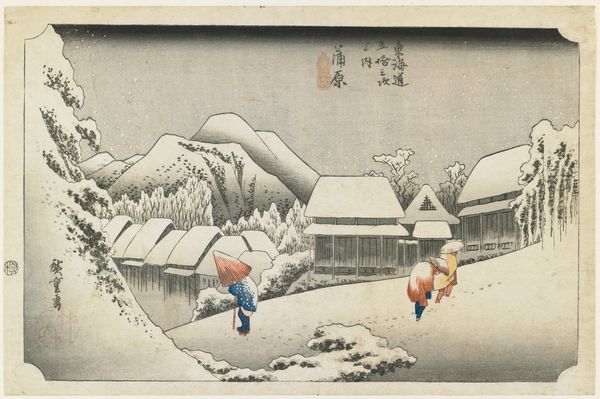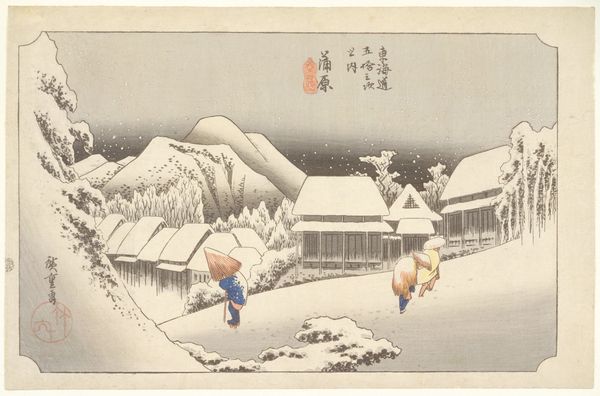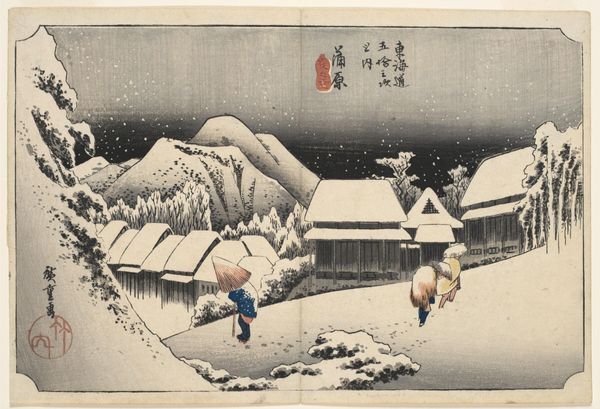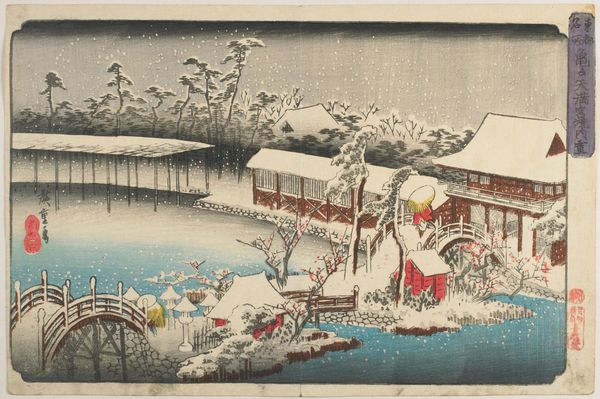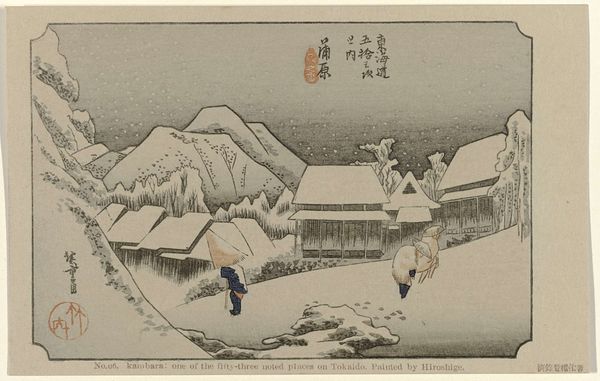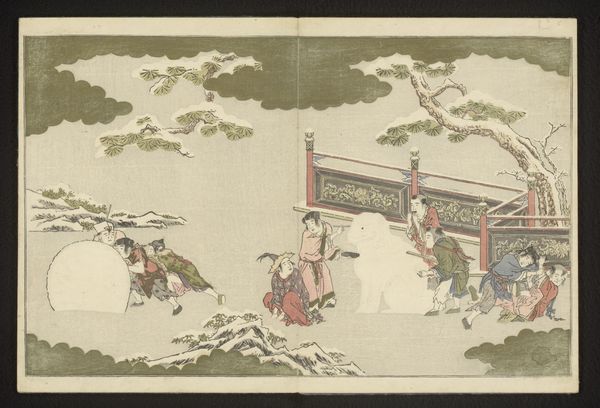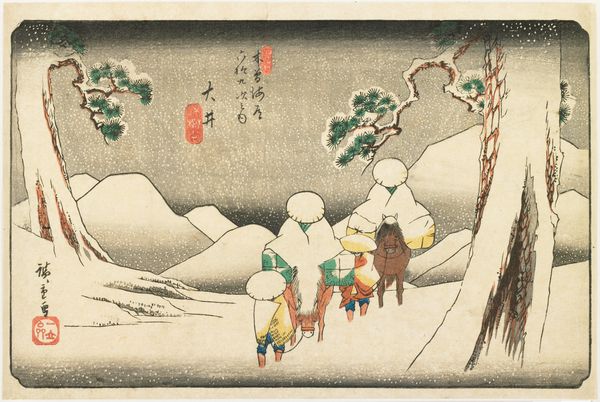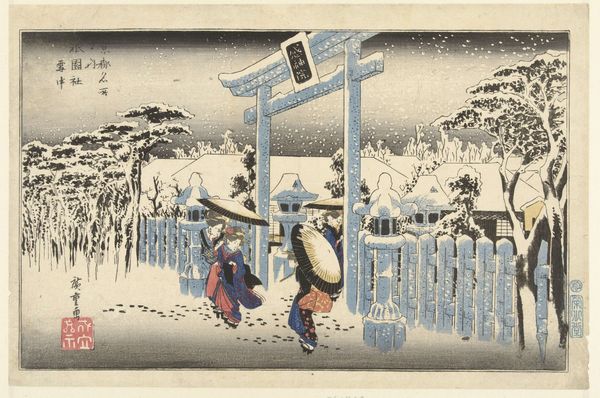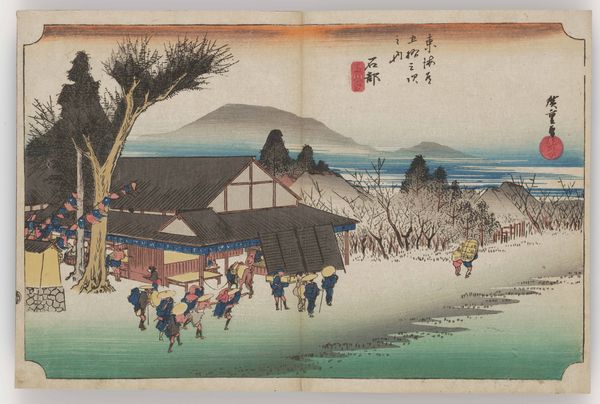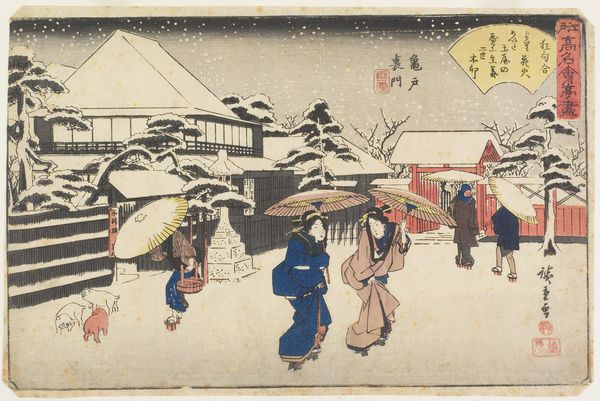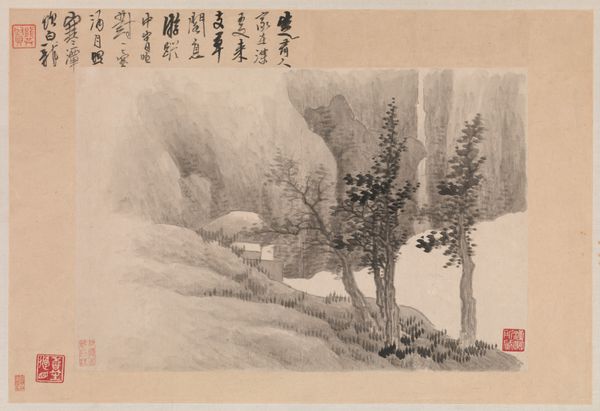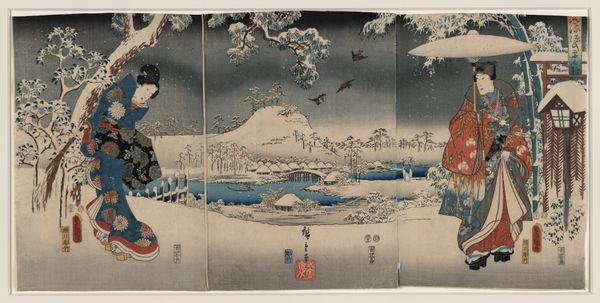![Kanbara- Night Snow [first state] by Utagawa Hiroshige](/_next/image?url=https%3A%2F%2Fd2w8kbdekdi1gv.cloudfront.net%2FeyJidWNrZXQiOiAiYXJ0ZXJhLWltYWdlcy1idWNrZXQiLCAia2V5IjogImFydHdvcmtzLzI2ZGIwNDlhLTY2MmQtNDczNC05ZGNhLWYwNTgyOGJlMDljZi8yNmRiMDQ5YS02NjJkLTQ3MzQtOWRjYS1mMDU4MjhiZTA5Y2ZfZnVsbC5qcGciLCAiZWRpdHMiOiB7InJlc2l6ZSI6IHsid2lkdGgiOiAxOTIwLCAiaGVpZ2h0IjogMTkyMCwgImZpdCI6ICJpbnNpZGUifX19&w=3840&q=75)
print, ink, woodblock-print
# print
#
landscape
#
ukiyo-e
#
ink
#
woodblock-print
#
19th century
#
genre-painting
Dimensions: 8 15/16 × 13 13/16 in. (22.7 × 35.08 cm) (image, horizontal ōban)
Copyright: Public Domain
Curator: Hiroshige’s "Kanbara - Night Snow", made around 1832 as a woodblock print, really arrests the gaze. Editor: It's surprisingly bleak. All that grey! Even though it’s picturesque, it gives off an impression of quiet suffering and resignation against the brutal cold. Curator: That’s a compelling reading, especially considering the social climate of Edo-period Japan. These ukiyo-e prints, while seemingly idyllic landscapes, were also commodities reflecting and shaping popular narratives about travel, class, and even social unrest. Editor: And I wonder about the lone travelers, their forms nearly swallowed by the snow. Note how Hiroshige used limited color to convey form. Are they pilgrims, or simply people trying to make their way despite the conditions? The path practically disappears! The red umbrella appears symbolically laden with warmth and protection. Curator: Absolutely. The red punctuates the starkness, acting as a visual anchor. Looking deeper, this work, like many landscapes of its era, is embedded in the evolving power dynamics of the Tokugawa shogunate. The simplification of the landscape and the near anonymity of the figures could be seen as a commentary on the individual’s struggle within a rigid social order. There is the wood block's suggestion of transience through its medium, aligning to "ukiyo-e"'s focus on a fleeting world, capturing a singular moment in what seems like eternal winter. Editor: It makes you think of resilience. A single red flash can represent all that endures, all that resists the cultural and social winters of its time, offering a little beacon across all the long ages that follow. I do like the stark isolation presented by the blanket of snow. Curator: That contrast – the individual flicker against the immutable backdrop of power – is what makes this piece so compelling and relevant, even centuries later. It highlights the complex interplay between individual agency and socio-political constraint. Editor: Very good, your insights add to its symbolic complexity. Thank you. Curator: My pleasure, thank you for prompting me to explore beyond its simple beauty.
